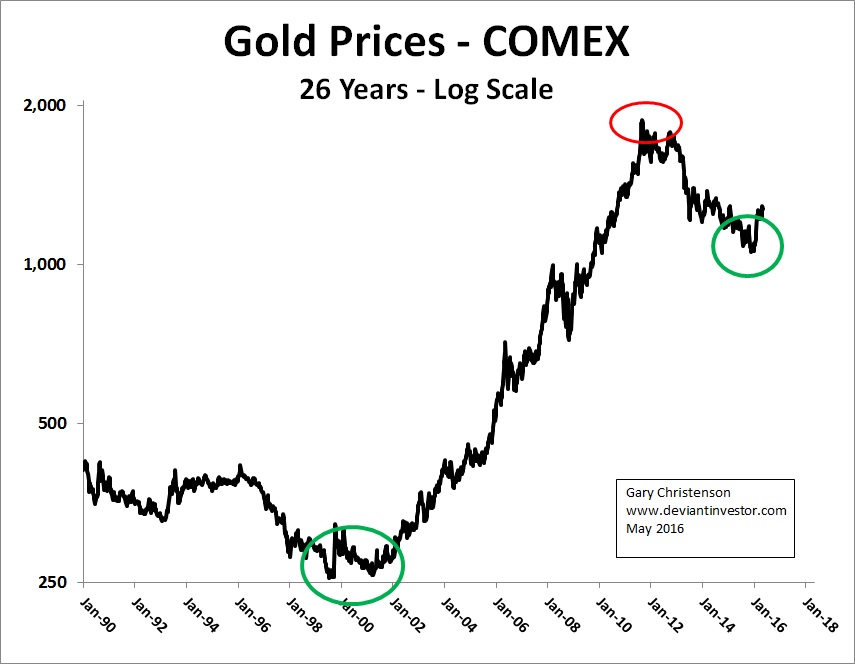Thanks to High Frequency Trading and the rise of the machines in the electronic markets, gold and the S&P 500 Index are difficult for non-machines to understand and predict on a short term basis.
What do they tell us in the longer term?
It is an exponentially increasing world! Both gold and the S&P 500 Index have risen exponentially for fifty years. Since they often move counter to each other, take the sum of the gold price plus the S&P 500 Index and you can see the overall trend more easily.

The exponential trend since 1990 is clear. We can reasonably expect they will continue to rise until we experience a massive reset in the financial systems.
What about the RATIO of gold to the S&P 500 Index?

Since 1990 the ratio (weekly data) has varied widely, from under 0.20 to 1.60. The two low points in the ratio are marked with green ovals, and the high point in 2011 is marked with a red oval.
Conclusion: At green ovals buy gold and sell the S&P. At red ovals sell gold and buy the S&P.
What about actual gold prices?

The above gold chart – log scale since 1990 – supports those conclusions. At green ovals, which are the same ovals as on the ratio chart, buy gold and at red ovals sell gold.
SUMMARY:
- Prices for gold and the S&P 500 rise exponentially. We can thank central banks, runaway debt, continual currency devaluations, and fractional reserve banking, but regardless, expect those exponential increases to continue until the financial system experiences a major reset.
- The ratio of gold to the S&P 500 Index is currently low, consistent with the fact that gold hit a multi-year low in December 2015. The ratio can easily triple from here.
- Green ovals indicate long-term opportunities to buy gold and probably to sell the S&P 500 Index.
- Do your own research, but based on the above charts, 2016 looks like a good time to accumulate more gold for the long term. When the gold to S&P 500 Index ratio approaches 1.2 – 1.6, reconsider both markets.
- Expect: More currency devaluations, higher prices for commodities, volatile markets, increasing central bank desperation as shown by craziness such as negative interest rates, more QE, and continued zero-interest rate policy. Central banks do NOT have your back – unless you are a member of the political and financial elite.
